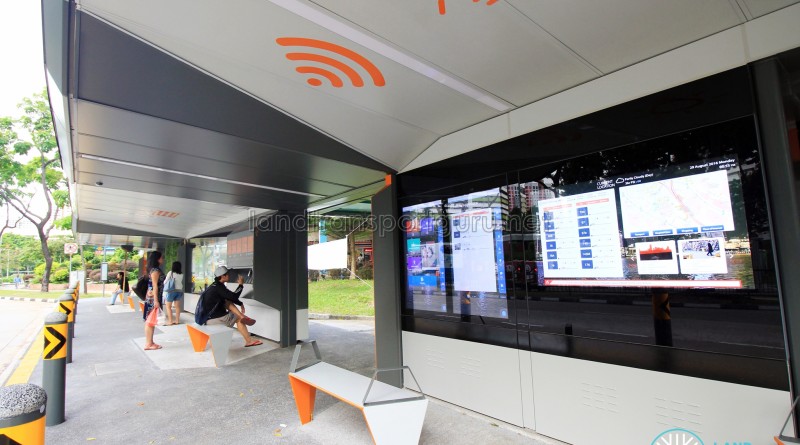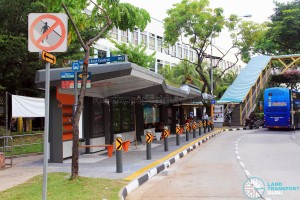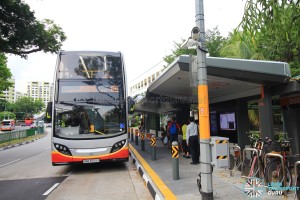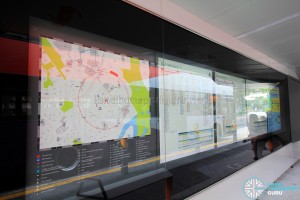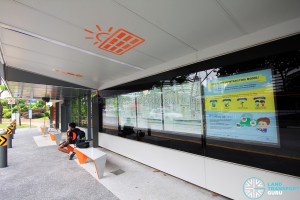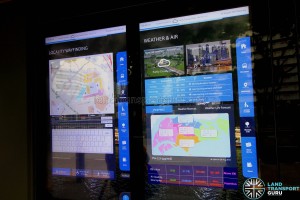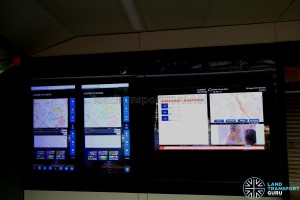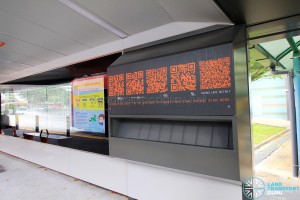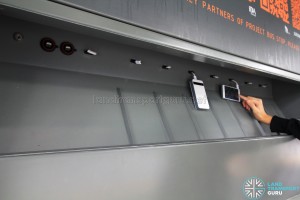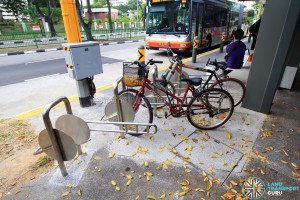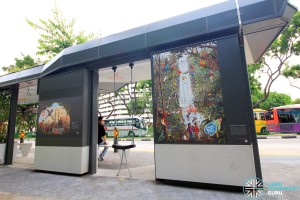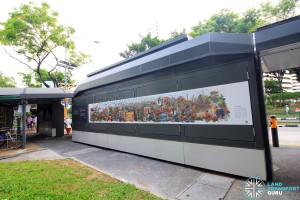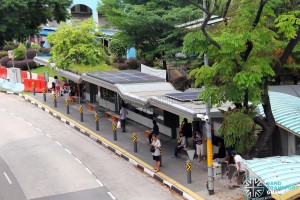Launched on 18 August 2016, a new concept bus stop at Jurong East designed to “make waiting fun” demonstrates how ground-up energy and creativity can be harnessed for urban and social innovation.
The bus stop, 28431 Block 134 along Jurong East Central, was conceived by a group of architects from DP Architects (DPA) as a Corporate Social Responsibility initiative. It re-imagines the daily commuting experience and how people transit, interact, and socialise in this public space. Named Project Bus Stop, the architects envisaged the new concept bus stop serving beyond its primary function to make waiting for buses a fun and enriching experience for commuters.
Coordinated by the Urban Redevelopment Authority (URA), this experimental project allows the trial application of design elements to a real setting and showcases how bus stops can be re-imagined as social spaces. Imagination, creative design and technology are integrated to enhance the ubiquitous bus stop as a social space, as well as the commuting experience. Project Bus Stop was implemented through a multi-agency collaboration comprising the Infocomm Development Authority of Singapore, LTA, National Environment Agency, National Library Board, National Parks Board, Singapore Land Authority and the URA.
This ground-up design solution features a bus-stop with free WiFi; handphone charging points; interactive smart boards that provide content and services such as bus arrival timings, e-books download and journey planner; a green roof; bicycle parking; and even a swing. It also showcases artwork by local illustrator Lee Xin Li.
Its new features will be in operation for a year from August 2016, and the public are encouraged to share their experiences of using the bus stop. The feedback received will help the agencies understand and ascertain the merits and value of the various features for consideration in the planning and design of bus stops going forward.
Project Bus Stop is one of several ongoing projects by government agencies and the industry to test out innovative technology in Jurong Lake District, which is envisioned to be a leading model for Singapore in developing a mixed-use urban district that is sustainable, smart and connected.
Books & Swing
A bookshelf within the bus stop keeps commuters occupied while waiting for the bus with a range of books to choose from. Unfortunately, when this picture was taken weeks after the bus stop’s opening, most of the books have disappeared from the shelves.
In addition to interestingly-designed seats with armrests, the bus stop features a swing, although its range of motion is limited by metal chains securing it to the ground. A Project Bus Stop information board is displayed next to the swing.
Greenery
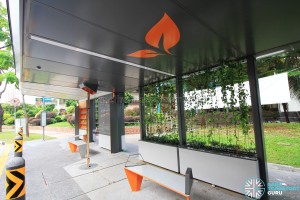
Greenery elements are integrated into the bus stop design, featuring a shallow planter box and climbing plants growing around vertical wires, forming a ‘wall’ that cuts glare and visually enhances the feel of the bus stop.
The green roof measures about 6 m by 3 m and is planted with shrubs that require little maintenance. Adding to the roof greenery is a Yellow Cow Wood tree which sits within a planter box in the bus stop; its stem goes through the bus stop interior, and out through a hole in the bus stop roof. A special rain funnel channels rainwater into the planter box for passive irrigation.
Information Boards
Project Bus Stop contains a large, continuous information board built into the wall of the bus stop, with enough room for five information panels. Apart from bus route information, a locality map and Bus Contracting Model promotional material is displayed.
The locality map, custom-designed for this bus stop, also shows landmarks within a radius of 5 minutes’ walk.
Interactive Panels
There are a total of 5 interactive panels at the bus stop, with 3 being 55-inches wide and the other 2 being 46-inches wide. The information panels feature larg font sizes and built-in lighting, which enhances its readability at night.
The large interactive screens has the following functions:
- Bus Arrival Timings
- Locality Map
- News & Event bulletins
While the smaller interactive screens has the following functions:
- E-Books downloaded by the National Library Board (NLB)
via QR Codes shown on the screens to be scanned by commuter’s smart phones - Journey Planner & Wayfinding
Journey Planner function by Singapore Land Authority (SLA)
Wayfinding function by SLA in collaboration with ST Electronics (Training & Simulation Systems) Pte Ltd - Environment Information (Weather Information & Pollution Standards Index (PSI))
Information retrieved from the National Environment Agency

Charging Ports
Commuters can also charge their phones while waiting for the bus at the charging station. The charging station includes microUSB cables for most smartphones, and Apple 30-pin and lightning cables for Apple devices.
Others
Near the front of the bus stop, a bicycle parking facility provides commuters with the option of cycling to the bus stop and transferring to the bus.
Finally, the back panels of the bus stop showcases artwork by local illustrator Lee Xin Li.
